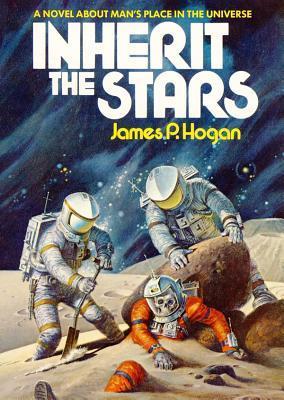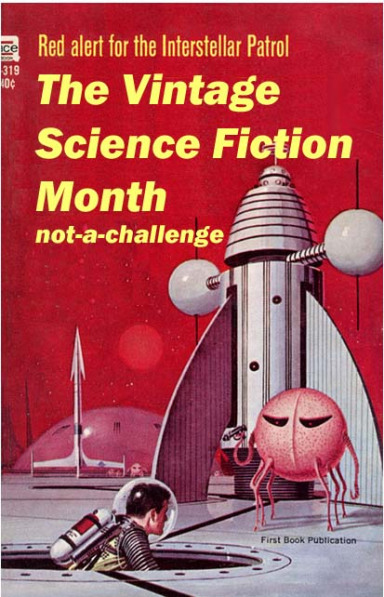SF Book Review – Part 33: Hugo Nominees and Moar
I started this post a few weeks ago, but I had wanted to at least acknowledge what was happening in the world in the intro and that ended up becoming its own post. All of which is to say, stay Safe and Constructive out there everyone! A surprising amount of progress has been made in a short time, but now we’re in for more opportunism and potential backlash, not to mention wave two of the pandemic. Wallowing in social media probably won’t be very productive for a while and maybe losing yourself in a novel is a good way to reset. Here’s a few that I’ve read recently…
- The Ten Thousand Doors of January by Alix E. Harrow – January Scaller is the ward of the wealthy Mr. Locke, an enterprising collector of mysterious trinkets and curious treasures. Set in the beginning of the 20th century, the story follows January and her talent for finding portals to other worlds. She has discovered a book amongst Mr. Locke’s belongings, a book of adventure and doors that features elements eerily familiar to January’s experiences. It’s an interesting enough premise, and it hits on two popular tropes that could make for an interesting combination: the portal story and the book-within-a-book. The former is merely a tease. There are portals to other worlds in this novel, but if you think this is going to be a story about actually traveling to new and interesting places and having adventures there, well, you’d be wrong. There are tantalizing mentions of these other worlds, some of which sound like they could be really exciting, but that’s all we get. We’re mostly just stuck in turn of the 20th century world, which is fine I guess, but doesn’t really deliver on the promise of a portal story. As a result, the world building feels a bit incomplete. The whole book-within-a-book conceit doesn’t really do much for me either, other than wreak havoc with the pacing of the novel. As previously mentioned, it’s not exactly a rollercoaster to start with, so this addition was not especially appreciated. Furthermore, both of these narrative threads (i.e. January’s and the book’s) are told in first person as a retrospective, which also has an impact on the stakes of the story. The characters came off as a bit flat to me. The heroine is fine, if not especially special (which is weird, because we’re often informed about how unique she is, even as she resembles a million other similar characters). The villains are obvious mustache-twirly types whose motivations don’t make much sense. Frankly my favorite character was Bad, the good doggo that January takes on early in the story. The prose doesn’t help things along either, as it’s overly flowery and at times, preachy (yes, this novel shares the politics of every other Hugo nominee from the past few years and it sometimes comes off as a leaden lecture). Ultimately, with the pacing issues and overbaked prose, it feels like not a lot happens in the book, which is one of those things that just bothers me. I’m obviously in the distinct minority on this one, so I’ll leave it at that. I clearly didn’t enjoy this and as of now it’s at the bottom of my Hugo Awards ballot. If you’re going to open a bunch of doors, you should probably go through them at some point.
- Gideon the Ninth by Tamsyn Muir – Gideon is a swordswoman attempting to escape a life of servitude for the Ninth House. Harrow is the heir to the Ninth House and a necromancer. When the Emperor summons the heirs to each house to find a leader so that he can defeat some threat on the horizon, Harrow enlists Gideon as her Cavalier. As the heirs to each house gather for their trials, dead bodies start to pile up, and mysterious bone creatures rear their ugly heads. I really ought to like this more than I do. It’s got a lot of winning elements. A Gothic whodunnit with bone witches and swordfights? What’s not to like? It’s got all the elements, and it comes together in the end fairly well, but there’s just a bunch of nagging complaints I can’t quite get over. A lot of people complain about the dense fog of jargon that is just sorta dropped on your head at the start, but that sort of thing usually doesn’t bother me. Some of the worldbuilding is unclear though, and that does lead to some confusion. The characters are a bit too snarky for my tastes. Gideon, in particular, seems awfully insubordinate for someone who’s supposed to be an indentured servant, and her relationship with Harrow is kinda weird. The whole odd-couple, enemies-to-friends thing is a time honored trope, but it only barely works here because the relationship is just so fraught with mistrust and pain that when things shift later in the story, it comes off as abrupt and perhaps unearned. The rest of the characters are a bit less defined and harder to care that much about, perhaps because there are so many of them (and they drop like flies as the story progresses). The story does seem to lapse into a repetitive state in the middle, but the conclusion is rousing enough. And along the way there are plenty of swordfights and necromantic creatures to keep things interesting. Ultimately, well, this isn’t really my preferred genre, but it comported itself just fine. It’s perhaps a bit too long and while it’s got all the right elements, there’s some tweaking needed to make it really sing. As with A Memory Called Empire and perhaps even The Ten Thousand Doors of January, I feel like this would be better served as a nomination under the Asounding Award (formerly the Campbell) for best new writer (all three of these novels are debuts, and thus it’s perhaps not so surprising that I have similar complaints). As a Hugo finalist, this can’t quite compete with the more developed storytelling that you get from Middlegame (which is still at the top of my ballot, even as I didn’t love that novel either…)
- The Last Emperox by John Scalzi – The conclusion to Scalzi’s Interdependency novels (The Collapsing Empire and The Consuming Fire) is, well, more of the same. Which, considering that I enjoyed the first two novels, is a good thing. I won’t call this Scalzi’s best work or anything, but it’s solid stuff and very entertaining. I don’t need to go into the plot much here because it’s kinda right there in the titles. The empire’s transportation network is collapsing and the Emporox must find a way to restore independence to each system before the become isolated while also fending off various assassination/coup attempts. Look, it’s getting a bit repetitive by this point and maybe it’s something that didn’t require a trilogy of novels to cover, but in general, I enjoyed spending time with these characters and while the scheming and intrigue are repetitive, Scalzi is actually pretty good at this sort of thing. Indeed, reading this not long after other Hugo nominees (particularly A Memory Called Empire, which has similar Empire-in-crisis vibes), put Scalzi’s talent for clever machinations and storytelling in stark relief. There were several surprises throughout, and even though some of them were fakeouts that some might find cheap, I rather enjoyed them. I won’t claim this should be nominated for a Hugo Award, but I do really enjoy Scalzi’s style. This isn’t his best work, but it’s highly enjoyable, and in these dark times, that’s laudible.
- Randomize by Andy Weir – This is actually a short story, but I thought I’d give it a crack because I like Weir and while this has some interesting elements, it doesn’t fully gel for me. It basically tells the story of how quantum computing could wreak havoc on our world, though he focuses the story on a particular Casino. It’s a good idea and the Casino world is a good microcosm, but some of the machinations, particularly towards the end of the story, are strained and not quite believable. Still, I’m always curious to see where Weir goes. Nothing he’s written recently has been as great as The Martian, but I like his approach.
- Rainbows End by Vernor Vinge – Towards the beginning of lockdown, I read two books that… start with plots about disease. This was not planned at all and felt a bit weird, but in this one, the disease was really just a delivery vector for something else. Once the story proper starts, the disease bit becomes background. Sometime in the not-too-distant future, Robert Gu receives a series of medical treatments that basically cures him of Alzheimer’s disease. He was a world-renowned poet before the disease, but now he awakens to find a world that has dramatically changed. Also, he was apparently a prick before the disease, so he’s got a lot of baggage to wade through with his family and friends. Then he gets caught up in some sort of conspiracy involving that disease vector thing. Once again, reading this in comparison to recent Hugo nominees puts things in stark relief. The sheer idea content of this book is so much higher than anything nominated in the past few years that I’m wondering where this type of science fiction went (incidentally, this won the Hugo back in the aughts). The storytelling is a bit less successful. It’s overlong and some of the characters aren’t entirely likable at first, but it still functions well enough. It sorta meanders a bit at times though, which doesn’t help with the pacing, and while the conclusion pulls all the threads together well enough, it just wasn’t as satisfying as it should have been. That said, the aforementioned idea content is high and so even when it’s going off on tangents, it’s interesting. I really enjoyed this book, even if it isn’t Vinge’s best work.
- Darwin’s Radio by Greg Bear – Ah, and this is the other disease novel that I inadvertently started reading during a global pandemic. I mean, I guess I should have read the description more, but I like Bear and this has long been on my book queue to catch up with, so I just took a chance and started reading it. Fortunately, it’s a pretty darned good book! Molecular biologist Kaye Lang believes that ancient diseases encoded in human DNA could awaken and start infecting people. Christopher Dicken is a “virus hunter” for the CDC who is hot on the trail of an elusive flu-like disease that only infects expectant mothers and their offspring. Mitch Rafelson is a disgraced paleontologist who stumbles upon the preserved bodies of a prehistoric family in the Alps. Of course, all three plotlines are completely independent with no overlap whatsoever. Oh, wait, no, the opposite of that. To be perfectly honest, much of the details of Bear’s exploration of DNA and disease are way over my head. That said, it all sounds impressive and isn’t obviously wrong, so he’s got that going for him. The broad strokes of the story seem plausible enough and are easy to discern, and it’s an entertaining yarn. It’s the longest book covered in this post, but it earned its length I think. Perhaps I’m just a sucker for Bear’s dense style though, so maybe take that with a grain of salt. The ending perhaps leaves too much room for a sequel (which is out there) and thus isn’t as satisfying as it could have been, but it works well enough.
That’s all for now. I’ve actually got quite a backlog of books to cover, so we’ll probably have another of these posts sooner rather than later.

